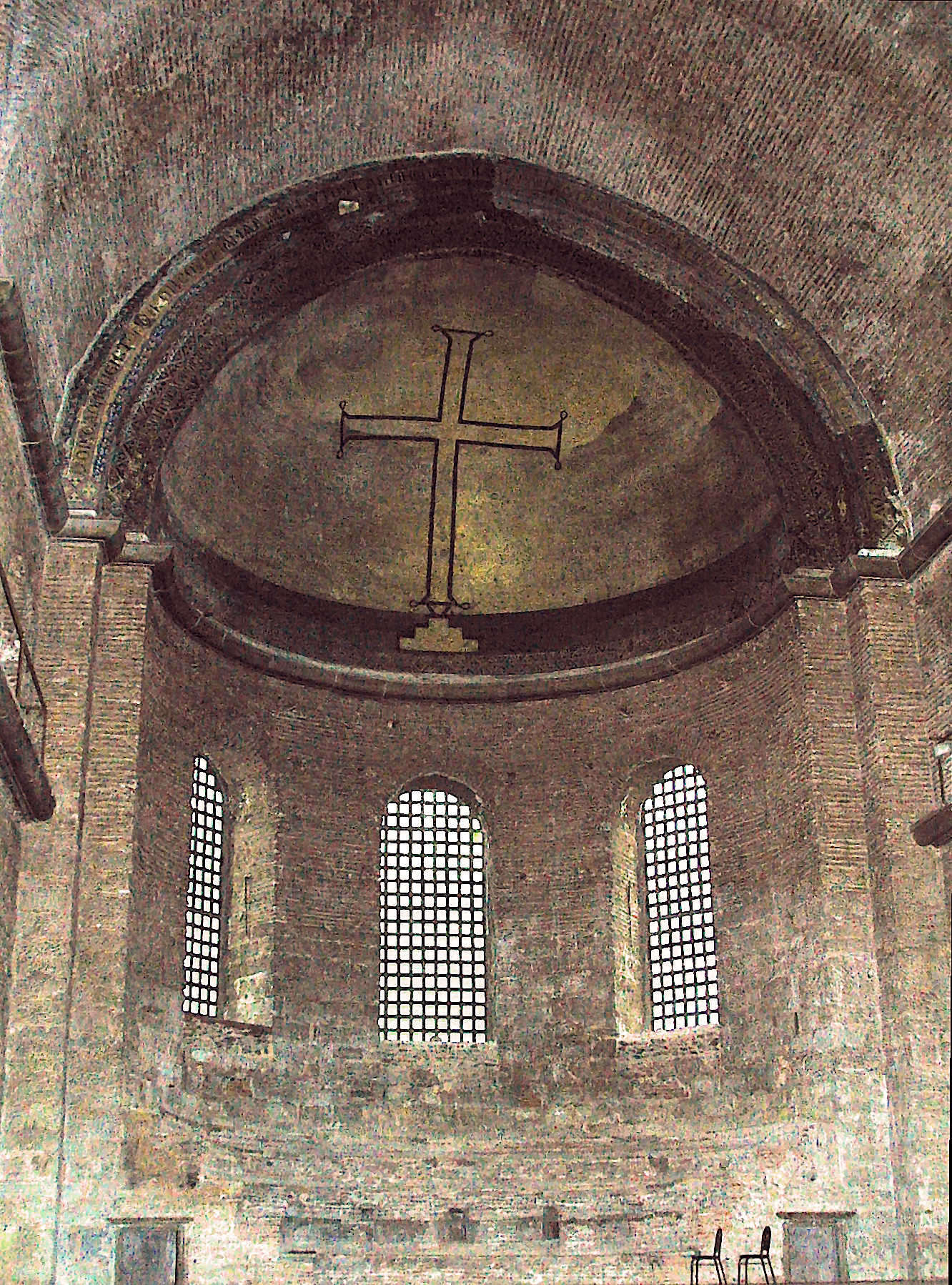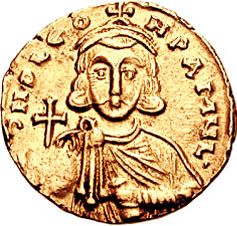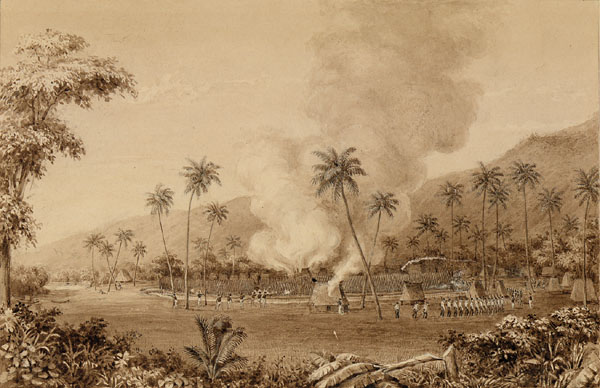|
Duchy Of The Pentapolis
In the Byzantine Empire, the Duchy of the Pentapolis was a duchy (Latin: ''ducatus''), a territory ruled by a duke (''dux'') appointed by and under the Exarch of Ravenna. The Pentapolis (from the Greek term ''πεντάπολις'', "five cities") consisted of the cities of Ancona, Fano, Pesaro, Rimini and Sinigaglia. It lay along the Adriatic coast between the rivers Marecchia and Misco immediately south of the core territory of the exarchate ruled directly by the exarch (the Ravennate), east of the Duchy of Perugia, another Byzantine territory, and north of the Duchy of Spoleto, which was part of the Lombard Kingdom of Italy (founded in 568). The duchy probably extended inland as far as the Apennine Mountains, perhaps beyond, and its southernmost town was Humana (Numera) on the northern bank of the Misco. The capital of the Pentapolis was Rimini and the duke was both the civil and military authority in the duchy. The Pentapolis was one of the more commercially vibrant part ... [...More Info...] [...Related Items...] OR: [Wikipedia] [Google] [Baidu] |
Duchy
A duchy, also called a dukedom, is a country, territory, fiefdom, fief, or domain ruled by a duke or duchess, a ruler hierarchically second to the king or Queen regnant, queen in Western European tradition. There once existed an important difference between "sovereign dukes" and dukes who were ordinary noblemen throughout Europe. Some historic duchies were sovereign in areas that would become part of nation-states only during the modern era, such as happened in Germany (once a federal empire) and Italy (previously a unified kingdom). In contrast, others were subordinate districts of those Kingdom (politics), kingdoms that had unified either partially or completely during the medieval era, such as France, Spain, Sicily, Naples, and the Papal States. Examples In France, several duchies existed in the medieval period, including Duchy of Normandy, Normandy, Duchy of Burgundy, Burgundy, Brittany, and Aquitaine. The medieval German Stem duchy, stem duchies (, literally "tribal duchy," ... [...More Info...] [...Related Items...] OR: [Wikipedia] [Google] [Baidu] |
Duchy Of Spoleto
The Duchy of Spoleto () was a Lombards, Lombard territory founded about 570 in central Italy by the Lombard ''dux'' Faroald I of Spoleto, Faroald. Its capital was the city of Spoleto. Lombards The Lombards invaded northern Italy in 568 and began their conquest of the peninsula eventually establishing the Kingdom of the Lombards. Following the conquest of the north, the Lombards moved into central and southern Italy capturing the important hub of Spoleto in 570. In 572, the Lombards captured the northern city of Pavia after a siege of three years and established the first capital city of their new Kingdom. As time progressed, the captured territories were divided by the Lombard king among numerous dependent dukes. A Rule of the Dukes, decade of interregnum after the death of Alboin's successor (574), however, left the Lombard dukes (especially the southern ones) well settled in their new territories and quite independent of the Lombard kings at Pavia. By 575 or 576 Faroald I o ... [...More Info...] [...Related Items...] OR: [Wikipedia] [Google] [Baidu] |
Byzantine Iconoclasm
The Byzantine Iconoclasm () are two periods in the history of the Byzantine Empire when the use of religious images or icons was opposed by religious and imperial authorities within the Ecumenical Patriarchate (at the time still comprising the Roman-Latin and the Eastern-Orthodox traditions) and the temporal imperial hierarchy. The First Iconoclasm, as it is sometimes called, occurred between about 726 and 787, while the Second Iconoclasm occurred between 814 and 842. According to the traditional view, Byzantine Iconoclasm was started by a ban on religious images promulgated by the Byzantine Emperor Leo III the Isaurian, and continued under his successors. It was accompanied by widespread destruction of religious images and persecution of supporters of the veneration of images. The Papacy remained firmly in support of the use of religious images throughout the period, and the whole episode widened the East–West Schism, growing divergence between the Byzantine and Carolingian Em ... [...More Info...] [...Related Items...] OR: [Wikipedia] [Google] [Baidu] |
Regino Of Prüm
Regino of Prüm or of Prum (, ; died 915 AD) was a Benedictine Order, Benedictine monk, who served as abbot of Prüm Abbey, Prüm (892–99) and later of St. Maximin's Abbey, Trier, Saint Martin's at Trier, and chronicler, whose ''Chronicon'' is an important source for late Carolingian history. Biography According to the statements of a later era, Regino was the son of noble parents and was born at the stronghold of Altrip on the Rhine near Speyer at an unknown date. From his election as abbot and from his writings, it is evident that he had entered the Benedictine Order, probably at Prüm itself, and that he had been a diligent student. The rich and celebrated Imperial Abbey of Prüm suffered greatly during the 9th century from the marauding incursions of the Norsemen. It had been twice seized and ravaged, in 882 AD and 892 AD. After its second devastation by the Danes (Germanic tribe), Danes, the abbot Farabert resigned his office and Regino was elected his successor in 892 AD. ... [...More Info...] [...Related Items...] OR: [Wikipedia] [Google] [Baidu] |
John The Deacon (Venetian Chronicler)
John the Deacon ( or ''Giovanni da Venezia''; 940–45 – died after 1018) was a Venetian deacon, secretary to the doge of Venice and a chronicler. The Venetian chronicle According to the Catholic Encyclopedia (1913): The oldest chronicle of Venice, known as the '' Chronicon Sagornini'', was compiled by deacon John, the chaplain and perhaps a relative of the Doge Pietro II Orseolo (991–1009). John enjoyed the confidence of this doge, and was often sent as his ambassador to Holy Roman Emperors Otto III and Henry II. In the first part of his chronicle, which deals with the early period of the republic, the narrative is often confused and deficient; later it becomes more accurate and complete, and for the time in which the writer himself lived it is particularly valuable. He carries the narrative to 1008 and treats in detail of the reign of Pietro Orseolo. John's chronicle is a key primary source for the history of Slavic peoples and polities in Dalmatia during the 9th and 10th ... [...More Info...] [...Related Items...] OR: [Wikipedia] [Google] [Baidu] |
Liber Pontificalis
The ''Liber Pontificalis'' (Latin for 'pontifical book' or ''Book of the Popes'') is a book of biography, biographies of popes from Saint Peter until the 15th century. The original publication of the ''Liber Pontificalis'' stopped with Pope Adrian II (867–872) or Pope Stephen V (885–891), but it was later supplemented in a different style until Pope Eugene IV (1431–1447) and then Pope Pius II (1458–1464). Although quoted virtually uncritically from the 8th to 18th centuries, the ''Liber Pontificalis'' has undergone intense modern scholarly scrutiny. The work of the French priest Louis Duchesne (who compiled the major scholarly edition), and of others has highlighted some of the underlying redactional motivations of different sections, though such interests are so disparate and varied as to render improbable one populariser's claim that it is an "unofficial instrument of pontifical propaganda." The title ''Liber Pontificalis'' goes back to the 12th century, although it on ... [...More Info...] [...Related Items...] OR: [Wikipedia] [Google] [Baidu] |
Paul The Deacon
Paul the Deacon ( 720s 13 April in 796, 797, 798, or 799 AD), also known as ''Paulus Diaconus'', ''Warnefridus'', ''Barnefridus'', or ''Winfridus'', and sometimes suffixed ''Cassinensis'' (''i.e.'' "of Monte Cassino"), was a Benedictine monk, scribe, and historian of the Lombards. Life An ancestor of Paulus's named Leupichis emigrated to Italy in 568 in the train of Alboin, King of the Lombards. There, he was granted lands at or near ''Forum Julii'' (Cividale del Friuli). During an invasion by the Pannonian Avars, Avars, Leupichis's five sons were carried away to Pannonia, but one of them, his namesake, returned to Italian peninsula, Italy and restored the ruined fortunes of his house. The grandson of the younger Leupichis was Warnefrid, who by his wife Theodelinda became the father of Paul. Paulus was his monastic name; he was born Winfrid, son of Warnefrid, about 720 in the Duchy of Friuli. [...More Info...] [...Related Items...] OR: [Wikipedia] [Google] [Baidu] |
Pope Gregory II
Pope Gregory II (; 669 – 11 February 731) was the Pope, bishop of Rome from 19 May 715 to his death on 11 February 731.Mann, Horace. "Pope St. Gregory II." The Catholic Encyclopedia Vol. 6. New York: Robert Appleton Company, 1909. 18 September 2017 His defiance of Emperor Leo III the Isaurian as a result of the Byzantine Iconoclasm, iconoclastic controversy in the Eastern Empire prepared the way for a long series of revolts, schisms, and civil wars that eventually led to the establishment of the Temporal power of the Holy See, temporal power of the popes. Early life Born into a Patrician (ancient Rome), noble Roman family in the year 669, Gregory was the son of Marcellus and wife Honesta. Gregory II was an alleged collateral ancestor to the Roman Savelli family, according ...[...More Info...] [...Related Items...] OR: [Wikipedia] [Google] [Baidu] |
Duchy Of Rome
A duchy, also called a dukedom, is a country, territory, fief, or domain ruled by a duke or duchess, a ruler hierarchically second to the king or queen in Western European tradition. There once existed an important difference between "sovereign dukes" and dukes who were ordinary noblemen throughout Europe. Some historic duchies were sovereign in areas that would become part of nation-states only during the modern era, such as happened in Germany (once a federal empire) and Italy (previously a unified kingdom). In contrast, others were subordinate districts of those kingdoms that had unified either partially or completely during the medieval era, such as France, Spain, Sicily, Naples, and the Papal States. Examples In France, several duchies existed in the medieval period, including Normandy, Burgundy, Brittany, and Aquitaine. The medieval German stem duchies (, literally "tribal duchy," the official title of its ruler being '' Herzog'' or "duke") were associated with the Fra ... [...More Info...] [...Related Items...] OR: [Wikipedia] [Google] [Baidu] |
Punitive Expedition
A punitive expedition is a military journey undertaken to punish a political entity or any group of people outside the borders of the punishing state or union. It is usually undertaken in response to perceived disobedient or morally wrong behavior by miscreants, as revenge or corrective action, or to apply strong diplomatic pressure without a formal declaration of war (e.g. surgical strike). In the 19th century, punitive expeditions were used more commonly as pretexts for colonial adventures that resulted in annexations, regime changes or changes in policies of the affected state to favour one or more colonial powers. Stowell (1921) provides the following definition: When the territorial sovereign is too weak or is unwilling to enforce respect for international law, a state which is wronged may find it necessary to invade the territory and to chastise the individuals who violate its rights and threaten its security. Historical examples *In the 5th century BC, the Achaem ... [...More Info...] [...Related Items...] OR: [Wikipedia] [Google] [Baidu] |
Paul (exarch)
Paul (; ; before 717/18 – 726/27) was a senior Byzantine official under Leo III the Isaurian, serving as the ''strategos'' of Sicily, and then as the Exarch of Ravenna from 723 until his death. Life Paul is first mentioned in 717/18. Theophanes the Confessor calls him the private '' chartoularios'' of Emperor Leo III the Isaurian, while Patriarch Nikephoros I of Constantinople calls him a loyal and close confidant ('' oikeios'') of Leo's, and that he was experienced in military matters. As a result, when the governor (''strategos'') of Sicily, Sergios, driven by a false message that Constantinople had fallen to the Arabs, declared a rival emperor in the person of Basil Onomagoulos, Leo named him as Sergios' replacement and sent him to Sicily to restore control. It was probably on this occasion that he was raised to the rank of '' patrikios'', although Patriarch Nikephoros implies that he already held the title. He is commonly held to have been the same as the Paul appoin ... [...More Info...] [...Related Items...] OR: [Wikipedia] [Google] [Baidu] |
Decentralisation
Decentralization or decentralisation is the process by which the activities of an organization, particularly those related to planning and decision-making, are distributed or delegated away from a central, authoritative location or group and given to smaller factions within it. Concepts of decentralization have been applied to group dynamics and management science in private businesses and organizations, political science, law and public administration, technology, economics and money. History The word "''centralisation''" came into use in France in 1794 as the post-Revolution French Directory leadership created a new government structure. The word "''décentralisation''" came into usage in the 1820s. "Centralization" entered written English in the first third of the 1800s; mentions of decentralization also first appear during those years. In the mid-1800s Tocqueville would write that the French Revolution began with "a push towards decentralization" but became, "in the e ... [...More Info...] [...Related Items...] OR: [Wikipedia] [Google] [Baidu] |




